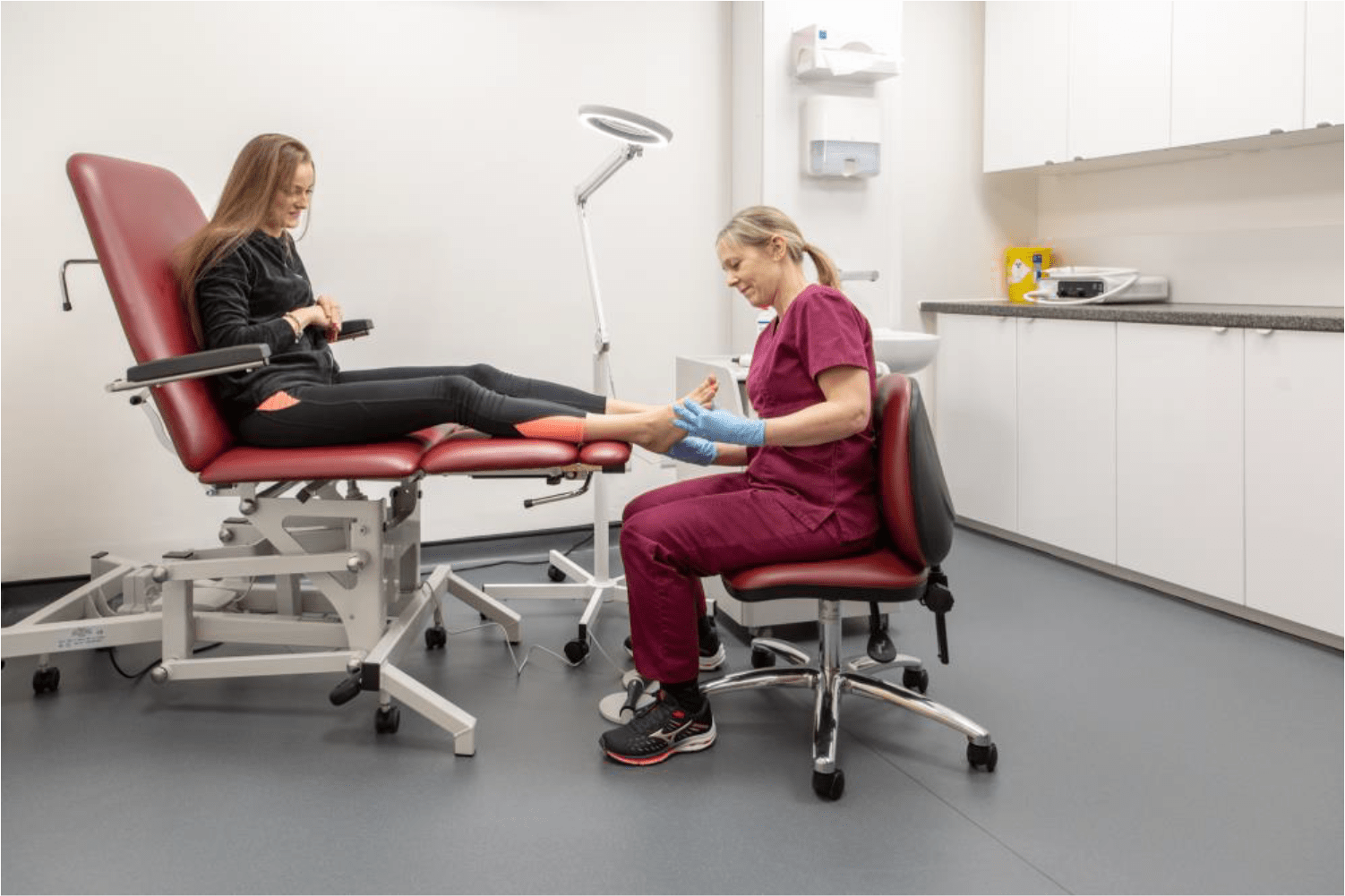Foot and Ankle Pain
Pain can be a result of a number of factors.
An injury or trauma produces an immediate painful response that can take up to six weeks to resolve. You may experience swelling and bruising and be unable to weight-bear fully. An X Ray or scan may be needed to check whether you have broken a bone or damaged a muscle or tendon. It’s important to give your body adequate time to rest and heal after an injury, before returning to your previous activities gradually.
Many acute injuries settle without any specific treatment other than rest, support and light activity. However, sometimes these injuries can take longer than expected to heal. There may be other factors that are affecting full recovery, such as a mechanical issue that may need addressing. This may have been present prior to the injury but hasn’t become apparent until now.
Lifestyle factors often contribute to foot and ankle pain. Spending long periods of time on your feet at work can sometimes put undue strain on your joints particularly if your footwear isn’t up to the job. Even your weight, how well you’re sleeping and stress levels can influence the level of pain you feel.
What is the diagnosis?
When you attend your initial appointment, your Podiatrist will want to gather as much information as possible about your foot pain. This helps us to reach a more accurate diagnosis and start you on the correct treatment. We are likely to want details about any recent injuries, medical history, medication, your general lifestyle and footwear. The relevant joints and soft tissues in the lower limb will be examined and checked for pain or any other abnormality. An ultrasound scan may also be used to help with diagnosis or examine surrounding structures. Nerve function may also be tested. These tests can be carried out while you are on the treatment couch or we might ask you to stand or walk so we can observe how the lower limb is functioning dynamically. If we need to have a look at your gait (the way you walk) more thoroughly, we may ask you to return for gait analysis which involves assessing, recording and analysing your walking or running in more detail using a treadmill and software.
Read more
If your Podiatrist feels that further investigations, such as an X-ray, ultrasound scan or blood tests are required, they will refer you to your GP. Likewise, if we feel that input from another health professional is beneficial for your recovery, for example a Physiotherapist or Podiatric surgeon, we will arrange this referral for you.
How can it be treated?
This would depend on the diagnosis and the cause of your pain. Sometimes taking simple steps such as changing your footwear is all that’s needed. If your symptoms become worse because of certain activities you are involved in, we may give you advice about reducing or modifying these until you are stronger. Your Podiatrist may prescribe exercises, taping or Shockwave treatment as part of your recovery. Orthoses (devices that fit into the shoes) or insoles can also be helpful in dealing with certain mechanical problems. Referral to your GP, Physiotherapist or Podiatric surgeon can be easily arranged if appropriate as we have excellent links with other local health professionals.
Steroid Injections
We may offer you the option of a steroid injection if you are experiencing pain with the following conditions:
Heel Pain (plantar fasciitis)
Big toe joint pain
Mid-foot osteoarthritis
Morton’s neuroma
INSURANCE
We accept private medical insurance from:








